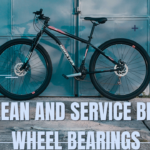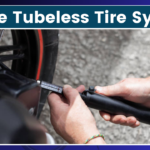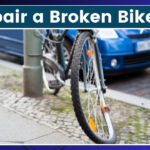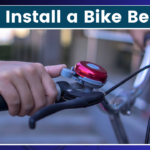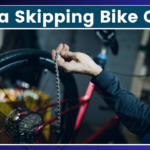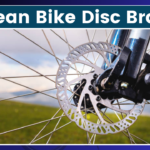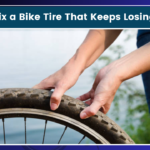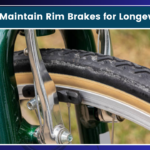As I sit here sipping my coffee and looking out at the gloomy sky, I can’t help but think about my ride to work tomorrow. The forecast isn’t great – rain, wind, and chilly temperatures. But you know what? I’m not going to let that stop me from hopping on my trusty bike and hitting the road.
I’ve been cycling for years now, in all sorts of conditions, and I’ve learned a thing or two about staying safe when Mother Nature decides to throw a tantrum. So, I thought I’d share some of my hard-earned wisdom with fellow cyclists who might be hesitant to brave the elements. Trust me, with the right preparation and mindset, you can keep pedaling through just about anything.
Before we dive in, let me just say that there’s no shame in opting for alternative transportation when the weather gets truly nasty. Safety should always be your top priority. But for those days when it’s just a bit dreary or drizzly, these tips should help you stay safe and comfortable on your ride.
Gear Up: Your First Line of Defense
The right gear can make all the difference when cycling in bad weather. I learned this the hard way after one particularly miserable ride home in a downpour, wearing nothing but a cotton t-shirt and jeans. Never again!
Here’s what I consider essential for tackling less-than-ideal conditions:
Waterproof jacket: Invest in a good quality, breathable waterproof jacket. Look for one with sealed seams and a longer back to keep your rear end dry from wheel-spray.
Waterproof pants or over pants: These are a godsend in heavy rain. They’re easy to pull on over your regular clothes and will keep your legs dry.
Gloves: Cold, wet hands are not only uncomfortable but can also affect your grip on the handlebars. Waterproof gloves are ideal, but even regular cycling gloves are better than bare hands.
Shoe covers: Also known as overshoes, these waterproof covers slip over your regular cycling shoes to keep your feet dry.
Eye protection: Glasses or goggles aren’t just for sunny days. They’ll protect your eyes from rain, wind, and debris kicked up by passing vehicles.
Helmet cover: A waterproof helmet cover will keep your head dry and help maintain visibility if your helmet has vents.
High-visibility clothing: With reduced visibility in bad weather, it’s crucial to make yourself as visible as possible. Opt for bright colors and reflective elements on your clothing and gear.

Bike Preparation
Your bike needs some TLC to handle the challenges of bad weather too. Here’s what I do to keep my two-wheeled companion in top shape:
Fenders: If your bike doesn’t already have them, install full-coverage fenders. They’ll keep you much drier and cleaner, especially when riding on wet roads.
Tires: Consider switching to wider tires with more tread for better grip on wet surfaces. I love my all-weather tires – they’ve saved my bacon more than once on slippery roads.
Lights: Good lights are essential in low-visibility conditions. I use a bright white light on the front and a red light on the back, both with flashing modes to catch drivers’ attention.
Brakes: Check your brake pads regularly and replace them if they’re worn. Wet conditions can reduce braking effectiveness, so you want your brakes in top shape.
Lubrication: Keep your chain and other moving parts well-lubricated to prevent rust and ensure smooth operation in wet conditions.
Riding Techniques
Now that you’re geared up and your bike is ready, let’s talk about how to ride in bad weather. It’s not just about powering through – you need to adjust your riding style to stay safe.
Slow down: This is probably the most important tip. Reduce your speed, especially when cornering or approaching intersections. It takes longer to stop on wet roads, so give yourself plenty of time to react.
Brake earlier and more gently: Apply your brakes earlier than you normally would and with less force. This helps prevent skidding and gives you more control.
Avoid painted lines and metal surfaces: These can be extremely slippery when wet. If you must cross them, do so as perpendicularly as possible.
Watch for puddles: Large puddles can hide potholes or debris. If you can’t avoid them, try to maintain a steady speed as you ride through.
Be extra vigilant: Bad weather affects everyone on the road, not just cyclists. Keep an eye out for distracted drivers or pedestrians who might not see you coming.
Use your gears: Pedal in a lower gear than usual to maintain better traction, especially when climbing hills or accelerating.
Relax your grip: A death grip on the handlebars can reduce your control. Stay relaxed and keep a firm but not tense hold on the bars.
Planning Your Route
When the weather turns sour, your usual route might not be the best option. Here’s how I approach route planning for bad-weather rides:
Stick to familiar roads: This isn’t the time to explore new territory. Stick to routes you know well so you’re aware of potential hazards.
Choose roads with good drainage: Some streets are prone to flooding or standing water. Avoid these if possible.
Consider alternate routes: Your usual shortcut through the park might turn into a muddy mess after rain. Have a backup route in mind.
Seek shelter options: Know where you can stop to wait out particularly heavy rain or take a break if needed.
Check for weather warnings: Before heading out, check for any severe weather alerts in your area. Sometimes, it’s better to delay your ride or find alternative transportation.

Maintenance
After battling the elements, both you and your bike deserve some TLC. Here’s my post-ride routine:
Dry off your bike: Use a towel to wipe down your bike, paying special attention to the chain and other moving parts. This helps prevent rust and keeps everything running smoothly.
Clean and lubricate: If your ride was particularly grimy, give your bike a proper clean and re-lubricate the chain.
Check for damage: Inspect your bike for any damage or wear that might have occurred during the ride.
Dry your gear: Hang up your wet clothes and gear to dry. Nothing’s worse than putting on damp gear for your next ride!
Take care of yourself: A hot shower and a warm drink can do wonders after a cold, wet ride. Don’t forget to stay hydrated, even if you don’t feel as thirsty as you would on a hot day.
Mental Preparation
Let’s be honest – cycling in bad weather isn’t always fun. But with the right mindset, it can be rewarding and even enjoyable. Here’s how I approach it:
Focus on the benefits: Remind yourself of the health benefits, the environmental impact, and the sense of accomplishment you’ll feel.
Embrace the adventure: Think of it as a challenge to overcome, not a misery to endure.
Be prepared to bail: It’s okay to have a backup plan. If conditions worsen, don’t be afraid to call it quits and find alternative transportation.
Reward yourself: Plan a little treat for after your ride – maybe a favorite snack or a relaxing activity.
Share your experiences: Connect with other all-weather cyclists. Sharing stories and tips can be motivating and helpful
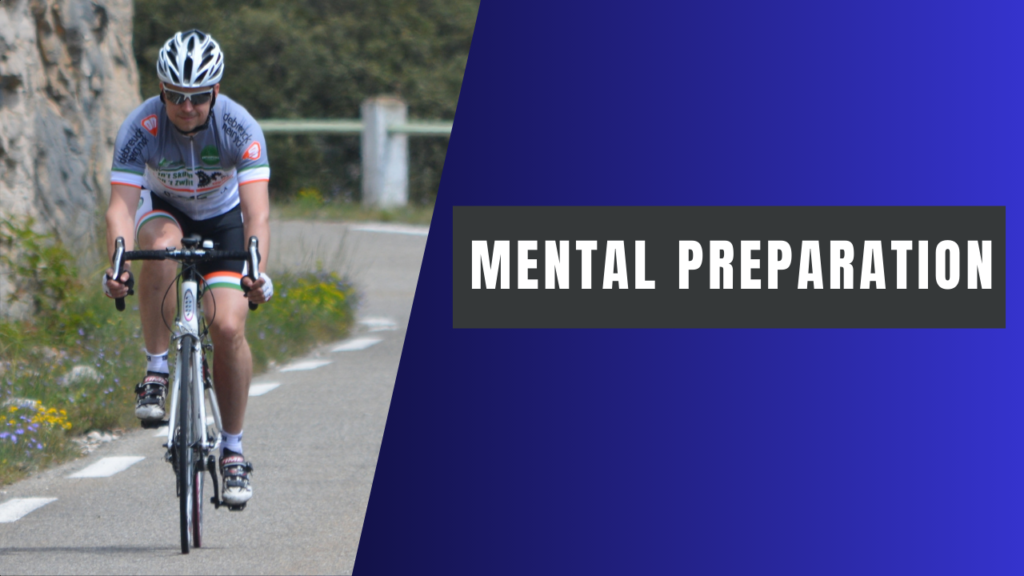
The Bigger Picture
You might be wondering, “Why bother cycling in bad weather at all?” It’s a fair question and one I’ve asked myself on particularly nasty days. But for me, and many other dedicated cyclists, there are compelling reasons to keep pedaling through the storm:
Consistency: Maintaining a regular cycling routine, regardless of weather, helps build and maintain fitness.
Environmental impact: Every bike trip, rain or shine, means one less car on the road.
Preparedness: The more you ride in various conditions, the better prepared you’ll be for unexpected weather changes during longer rides or events.
Mental toughness: Overcoming the challenge of bad weather builds resilience that carries over into other areas of life.
Appreciation: After riding in tough conditions, you’ll appreciate the good days even more!
In The End
As I wrap up this article, the rain outside has started to let up, and I can see a patch of blue sky peeking through the clouds. It reminds me that no matter how bad the weather gets, it always passes eventually. The same goes for challenging rides – they might be tough at the moment, but the sense of accomplishment at the end is worth it.
Cycling in bad weather isn’t for everyone, and that’s okay. But if you’re willing to give it a try, I hope these tips help you stay safe and maybe even enjoy the experience. Remember, there’s no such thing as bad weather, only inappropriate clothing (okay, maybe that’s a bit of an exaggeration, but you get the idea).
So, the next time the forecast looks gloomy, don’t automatically reach for your car keys. Consider gearing up, hopping on your bike, and embracing the challenge. Who knows? You might just discover a whole new side to your cycling journey.
Now, if you’ll excuse me, I need to go check my tire pressure and charge my lights for tomorrow’s ride. Rain or shine, I’ll be out there, pedaling my way through whatever Mother Nature throws my way. Stay safe, stay visible, and keep spinning those wheels!

